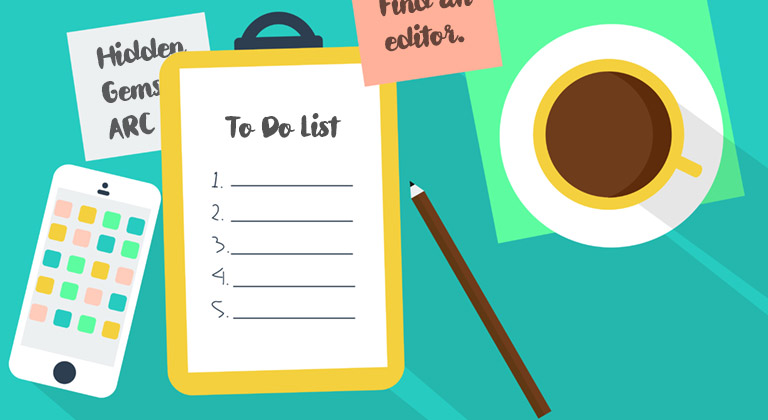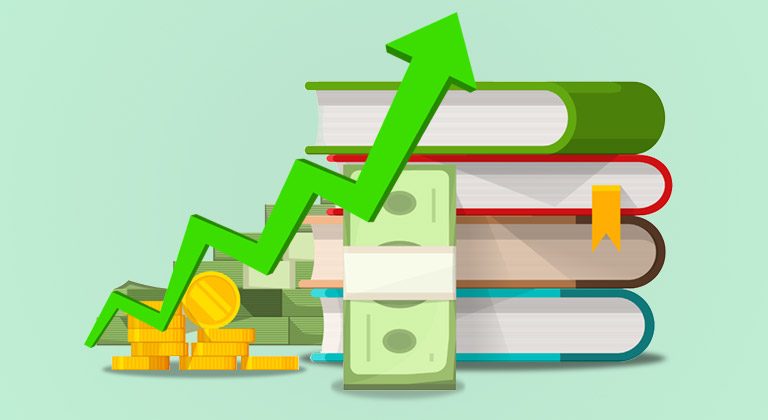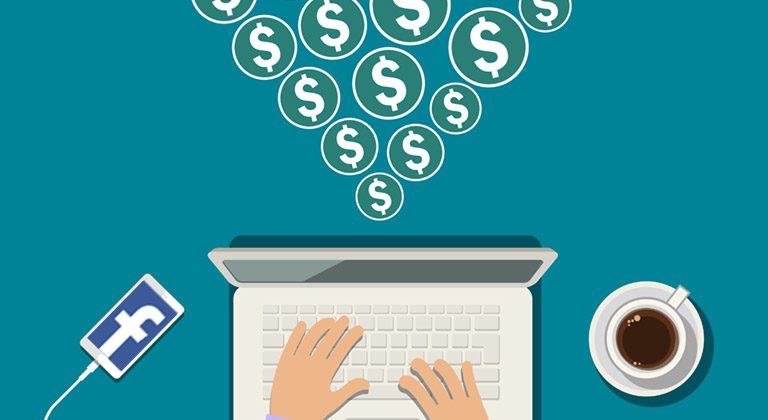What are your Publishing Priorities?
As many of us know, when it comes to self-publishing, actually writing your book is really only the first step in a much bigger process and to really have any chance of achieving success in this business, you can’t afford to miss or skip any of the other steps. You want to make the most out of each book launch, which means being prepared and well organized – in other words, “get all your ducks in a row.” Unfortunately, that advice only works when you’re already sure which order your ducks are meant to go in! That’s why in this short guide, we’ll break down the publishing priority list for any independent author.
One of the things that holds back a lot of self-published authors is the sheer scale of launching a writing career. Writing a book is hard enough – but then you’ve got to teach yourself how to publish, promote, market, and advertise your book – all stuff you might not have signed up for when you first decided to put pen to paper.
Well, there’s no easy route to success – but like there’s ‘Maslow’s Hierarchy of Needs’, I think there’s a priority list in terms of what you need to work on first.
I’m going to break down these priorities, because it can often help new authors break down the overwhelming challenge of getting it all right, and instead attack it like devouring a whale: One bite at a time.
Priority #1 – your book
Obviously, the first thing you’ll need as a self-published author is a book that you can publish. Yourself.
In all honesty, this is the stage in which most would-be writers fail. It’s actually very difficult to craft a 50,000 narrative, beginning to end. Countless people start a novel, but very few ever get through to the final stage and type: The End.
So, if you’ve got a book completed, good for you. That’s one hell of an achievement in and of itself.
Now, it’s time to forget that sense of achievement, and tear your work to shreds.
- Be sure to have your book edited – professionally. How deep you want the edits to go depends on you – for example, I’ll limit my editor to proofing, because I’ve become fairly adept at self-editing before I’m ready to publish. However, it’s still a step you can’t afford to skip. It’s literally impossible for an author to objectively proofread their own book, and one of the quickest ways to kneecap your publishing career before you begin is to have book reviews that point out typos or spelling errors. If you’re publishing your first book (or second or third) you might want to invest in a copy editor, or even a developmental editor. You can see the changes they make to your manuscript, and then teach yourself to preemptively write like that. Editing is where you really learn that writing is a craft, not an art – because the more you learn from professional editors and other writers, the better polish you’ll develop on your own work.
- Include a link to your subscriber list. Building a newsletter list is one of the foundational strategies for self-publishing success, but unfortunately that’s a step many of us authors didn’t realize until we’d already published three or four books. Sign up to MailChimp, or Constant Contact, or any other ‘blast email’ service, and start collecting the email addresses of people who liked your book enough to want to read more. These will be your superfans of the future.
- Include links to your author page, and back matter. One of the challenges of publishing each subsequent book is that you don’t have a link to it in your previous ones! But this is a problem you can largely solve by doing something else a lot of first-time authors forget to do; put in a link to your author page on Amazon. It’s a bit of a chicken-versus-egg scenario – spending the time creating your page on AuthorCentral before you have books to show off on it; but once again, it’s one of those spiderwebs you don’t want to regret not doing right from the get-go.
Bonus
Give some thought to your first few pages. The ‘look inside’ section of a book offers a sneak peak, but that’s something you can only impact during the crafting of your book. Make sure your first page is a barnstormer – so anybody who clicks ‘look inside’ has no choice but to buy the book to find out what happens next!
Priority #2 – your product page
Once you’ve published your book, it’s time to sell it.
Your product page on Amazon is where your book is located, and it’s probably the thing that will make or break your writing career. Your product page is where the most important decision in a potential reader’s buying cycle is made – whether to click ‘buy now’ or not.
I can’t stress enough how important it is to have a stellar product page on Amazon. To an extent, having a good product page for your book is almost more important than having a good book – the first time, at least. Your product page on Amazon is where people get to experience the promise of the book – and if you can then deliver a good read, they’ll buy into your pen name for your next book and beyond.
The most essential priorities on your Amazon product page are:
- A good cover. No, a great cover. They say you shouldn’t judge a book by it’s cover, but we’ve already ascertained this this is wrong. Unfortunately, your cover is probably the single-most important thing about marketing your book. That’s not to say you can do without the other things – cover/blurb/reviews are like a holy triumvirate, if you will – but out of everything, it’s your cover that can move the needle more than anything else. A cover is like a promise to your reader… If it’s professionally designed, it’s the promise that you invested in the polish of your book. If it’s designed to meet the branding of other books in your genre (look at thrillers especially – they all look the same) then it’s a promise that you know your genre. If it’s eye-catching and clear at full-size, at 300 pixels high, and in a thumbnail, it’ll work hard to drive customers to your product page. If there’s one thing worth investing in, it’s a solid cover.
- A dynamite blurb. Your cover is what gets people to click through to your product page – either from an advertisement, its appearance in search results, or its place in the ‘Also Boughts’ or Best Seller charts. Once they come to your product page, though, it’s the blurb that will sell them on whether to proceed with this buying decision or not. We’ve written before about how to write a dynamite blurb, and once again – this isn’t a step you can afford to miss. The trick is to pose a question or a scenario that demands the reader buy the book to find out what happens – and in that respect, shorter is often better. Just make it compelling. This is the first sniff of your writing style and ideas that a potential reader will sample – and you want to get them addicted.
- A good number of reviews. One of the reasons most authors become aware of Hidden Gems Books is because our subscribers help authors get reviews – and reviews sell books. Pretty much the distillation of ‘social proof’, the more reviews a book has, the more ‘legitimate’ it’s seen in the eyes of potential purchasers. A service like Hidden Gems is one way to get reviews for your book, the other is to solicit them from your own subscriber list. In any event, reviews help sell copies of your books – and they don’t even need to all be good ones! In fact, a mixture of reviews – honest ones – tend to produce better sales than nothing but 5-star reviews, because there are still unscrupulous services out there which will ‘sell’ perfect reviews to authors. The double-edged sword of honest reviews, though, is that they can often reveal an author’s shortcomings – and if you’re getting constant critical reviews, you’ll have to look unflinchingly at each of them and see what advice you can pull away from them for your next book.
Bonus
If you login to AuthorCentral, you can expand on your product page with editorial reviews, a biography, and more – be sure to do so! This is also where you can link all your books together, and create your author profile page. Just remember that any changes you make to your book’s description will wipe out whatever you originally posted when you published the book; so if you’ve got fancy HTML plugged into your blurb, you’ll need to be careful!
Priority #3 – your launch
Now you’ve got your book ready for the world, it’s time to unleash it!
Quantum physics suggests that time is a human construct, and in the world of self-publishing, that seems true. You might click ‘publish’ on one day of the week, but it’s often not for another week or two until you ‘launch’ your book with all the reviews and product page information finally filtering in.
However, even if it’s a couple of weeks late, your launch is often your chance to hit a home run (or not) with the success of your book. For the first few weeks of a new book’s release, Amazon will often give it preference in ranking, visibility, and exposure – especially if it does well, and ranks in sales.
So, your best bet with each new book you write is to hit it hard during your launch – because that’s when any advertising or promotion will work hardest for you.
- Email your subscribers – even if you’ve only built up a small list of subscribers, your first strategy should be to let them all know that your new book has been released. It’s no secret that your mailing list (should) contain your most eager customers, so you’ll probably find that this is the first and biggest push you get for sales. When you’ve reached the towering heights of Stephen King or J.K. Rowling, a mailer to your subscriber list should be enough to land your new release right on the best seller lists. For the rest of us, though – it’s probably the first and biggest bump you’ll get, so don’t waste the opportunity.
- Social Media blast – Likewise, now is the chance to let your social media followers (if you have any – yet!) know about your new release. Another good strategy is to ‘cross the streams’ and promote your social media posts to your subscriber list – asking them to ‘like’ and ‘share’ your Facebook and Twitter posts, and massively amplify their impact.
- Free promotion – Around 80% of books in the best-seller categories are part of KDP Select – meaning they’re exclusive to Amazon, and have a 5-day period in which they can be given away for free. Whether you’re part of KDP Select, or prefer to ‘go wide’ it’s a good opportunity to use the free marketing that Amazon offer, so I’d recommend you use the KDP Select option at least once; and promote your book for free for five days. If your ultimate strategy is to remain wide – using other vendors aside from just Amazon to sell your book – you can still do this. Just remember to switch off the renewal option before your 90-day period of exclusivity is over.
Bonus
Maximize your impact with advertising! Whether just part of a general launch strategy, or part of your scheme to give away free books through a KDP Select promotion, it’s always a good idea to invest the majority of your disposable advertising dollars during the launch period. I’ve had a great deal of success pairing a 5-day KDP Select Free Promo with newsletter blasts and Facebook advertising; and the boost in sales has returned my investment pretty quickly in the weeks that followed.
Priority #4 – moving forward
Your book’s launched, and it was a hit! Or, not…
Whichever way, don’t sweat it too much. Success in self-publishing is a marathon, not a sprint. It’s a case of publishing your book to a schedule that works, then honing that launch for the next title – and there should always be a next title in the works (more on that later.)
It’s never a good idea to obsess too much about driving the sales of your previous books, but it’s worth figuring out a holding pattern and investing what’s worth it. For most of us, that looks something like this:
- Advertising on Amazon – Amazon have made it easy to spend money advertising your book right within their own sales dashboard; but not as easy to make sales! It’ll take time, study, and investment to make it work – and that’s no guarantee you can. Ideally, though, you should try to map out a strategy that will drive book sales using Advertising on Amazon without spending more than you invest. The biggest factor here is the convertability of your books – how often somebody who visits your product page will actually click ‘buy now.’ Each new book you publish should focus on that as the priority, because once you’ve found the sweet spot and are able to get a positive return on your advertising investment, you can ‘scale it up’ and reach real profitability.
- Advertising elsewhere – Just like with Advertising on Amazon, it’s not as easy as it sounds to make a positive ROI on ads you post on Facebook, or Bookbub, or elsewhere. However, if you can manage it, this will be one of your most reliable drivers of book sales. Each different platform has its own nuances and subtleties, so experiment with all of them; and see if you can find one that provides you a good return. If you can’t, don’t be afraid to pull the plug. It’s not worth sinking good money into a poorly performing book. It’s better to save it for the next title!
- Use all the free tools you can! While spending money is a gamble, you can always get a positive ROI on your time. Liaising with other authors or bloggers, utilizing the KDP Select free promotion every ninety days, and adding your name to free newsletters and promotions are all ways to keep sales coming in without having to spend much money. Obviously, these methods won’t have a huge impact – if they did, everybody would be doing them – but it’s still worth doing, because every sale provides value in terms of your overall visibility on Amazon and beyond.
Bonus
Don’t forget to include links to your old books in the back matter to your all your new books – as each new book you write will be better than the last, but eager readers will ideally want to read everything you’ve written!
Priority #5 – your next book!
Speaking of your next book, remember the golden rule: Always be writing the next book.
Stephen King, JK Rowling, Lee Child, Dan Brown… every successful author didn’t get there off the back of one book. They were (and continue to) write constantly – and each new book these authors publish offer a new entry point for fledgling readers. If there’s one rule to becoming a successful self published author, it’s one I’ve reiterated many times – just keep writing!
I’ve known plenty of would-be authors who’ve taken a stab at self-publishing success, but abandoned their plans after three or four books did less-than-brilliantly.
I’ve never, however, met an author who’d written and published 30 full length books and not been successful.
I quote Oscar Wilde a lot, when he says: “A writer describes himself as a verb, not a noun.” A verb is an action word, and to be a writer you have to be writing. This is and always will be your priority as an author, and you should never let anything (even the success or failure of your last book) distract you from that.











